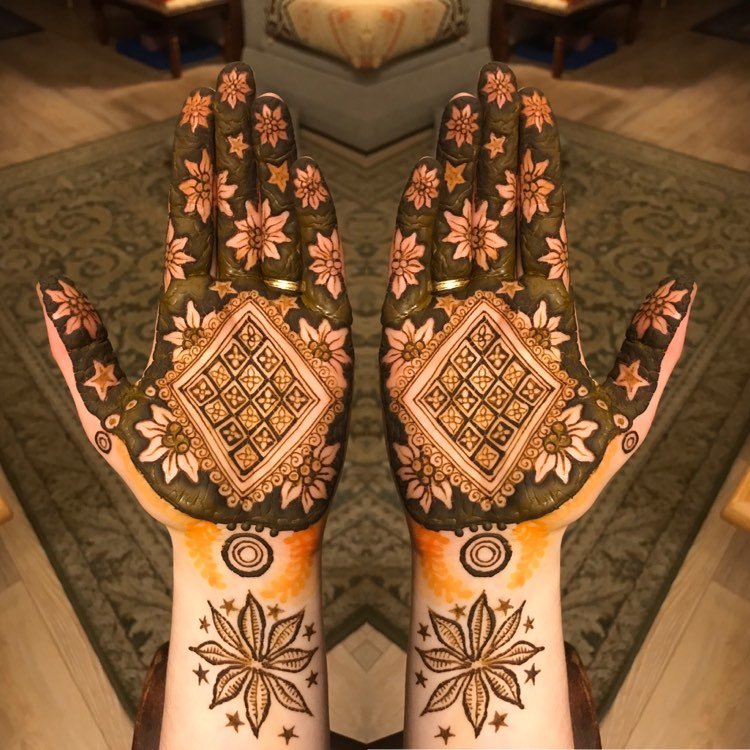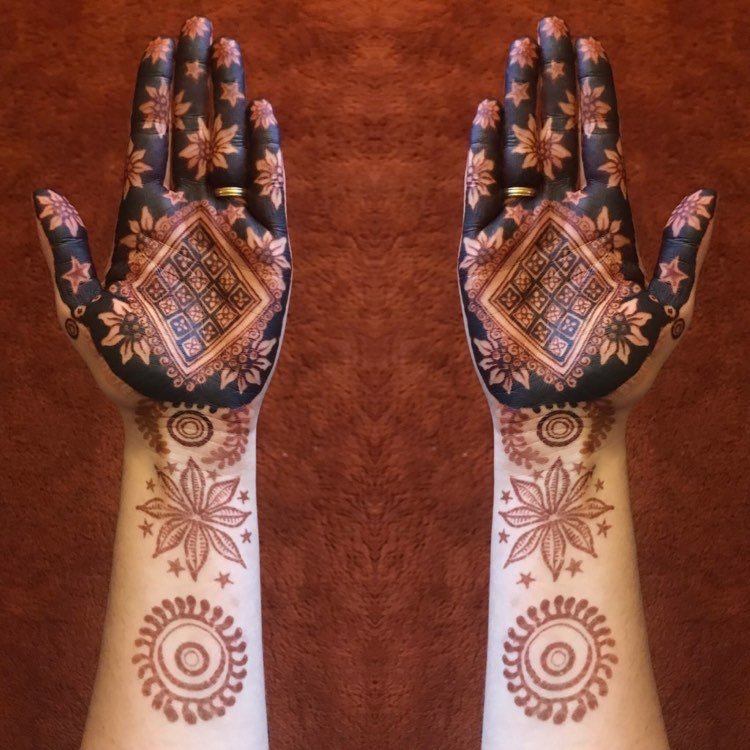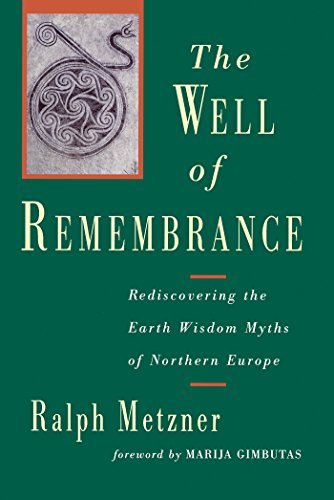Alongside my recent research on the medicinal properties of henna, I’ve been diving into my own heritage by sniffing out trails of earth-based wisdom from Germanic traditions, bringing the findings into my life and artwork. A few nights ago, I sat down to make this design, inspired by some of those German trail treats and featuring design elements such as edelweiss, waldmeister, and a Bavarian checker pattern which I incorporated the flowers of the waldmeister plant into.
It was a pretty special batch of henna for a couple reasons. It was my first one made using a new powder which I was fortunate to receive directly from a farm in Sojat, India (in the state of Rajasthan). Brilliantly fresh, stringy, and perfectly sifted, it yielded a paste of unrivalled creamy consistency. For the first time, instead of using diluted lemon juice, I had added a decoction of cedar boughs gathered from a recent windstorm and boiled into a deep amber juice atop the wood stove to achieve the pH necessary for dye release. The sweet smell of a cedar forest blended perfectly with the lavender terping oil and the leathery musk of the henna powder.
After it was done, I was keeping warm by the fireplace - as one does with fresh henna, to open the skin’s pores and get deeper colour - pursuing the web for more information on this waldmeister plant which I had used in the design. Ever drawn to the misunderstood and mysterious, I had chosen it after learning that despite being a culturally significant plant used in traditional foods & beverages, it was banned for use in food production in Germany in 1974 for “health reasons” observed through animal testing. (It had already been banned by the FDA in 1954 in the US for similar reasons). What was this plant’s story?
Waldmeister - translating to “master of the woods”, also known as sweet woodruff, ladies’ bedstraw, galium odoratum - has strongly medicinal properties. Many of its medicinal values come from an active ingredient called coumarin which is the same found in sweetgrass and is responsible for both plants’ gorgeous honey-vanilla-hay scent. I squealed in my rocking chair.
In Germany, waldmeister has been used for over a thousand years to flavour wines, brandies, beverages, jellies, sorbets, and fruit salads - most notably the Maibowle, which is a wine punch served on spring holidays as a health tonic. It was added to potpourris, snuffs, and perfumes. The dried leaves can also scent sachets or sleep pillows or serve as a wreath backing. It was also hung in churches as a symbol of humility and placed among stored linens to repel moths and other insects.
Medicinally, waldmeister has been used to treat disorders of the kidney and liver, uterine cramps and problems of menopause, nervousness, dropsy, varicose veins, poor digestion, and heart irregularities, and was added to other medicines to improve their flavour. The bruised leaves, which contain tannins, have been poulticed on cuts and wounds. It is also a laxative and anti-arthritic. Research has shown that it kills bacteria and that one of its constituents, asperulide, reduces inflammation. Although a tea of the wilted or dried leaves is still used as a gentle tranquilizer, large quantities can cause dizziness and vomiting.
In between sleuthing out these sweet, sweet ethnobotanical tidbits, I admired photos of the plant when suddenly a memory clicked. For the past three years this plant has been growing literally right outside of my front door…… and I have been pulling it up to make room for peppermint shoots. I scrambled into the night with a headlamp and my incapacitated henna adorned hand, sticky with a lemon sugar glaze to keep the design in place and intensify the colour. Poking around in the patch, still covered in the detritus of winter I found what I hoped was last year’s waldmeister patch.
The leaf and growth pattern was a match, but there was no honey-vanilla-hay scent when I crushed or chewed the leaves. I took a leaf back inside to to fine tune the identification. It wasn’t cleavers, the one look alike for the plant, because the leaves were rough and not sticky. There were no flowers to go by, so I rushed back out to the patch and continued poking around. Then, beneath the flattened mass of the ground cover I saw bright green shoots emerging - BABY WALDMEISTER?! I gently plucked one of the heads and crushed it. My hands were so fragrant with the aroma of henna paste I had to put the wee sprout onto a stone table and take a whiff from there.
*Sniff sniff* Honey-vanilla-hay. It was waldmeister!!! :D
Since then, I’ve cleared out the old foliage and the little shoots are happily growing upwards and out towards the light. I’m looking forward to making my first maibowle this year when the time comes, to being able to taste something I’m sure many of my ancestors would have enjoyed in their own moments of spring.
PS, for anyone with an interest in the pre-christian culture and mythology of Germanic peoples, I highly recommend the book "The Well of Remembrance: Rediscovering the Earth Wisdom Myths of Northern Europe".






